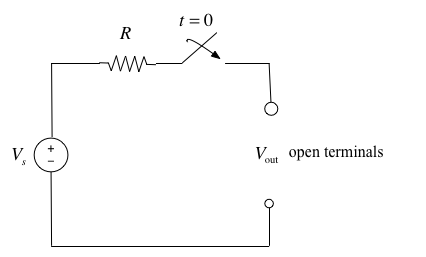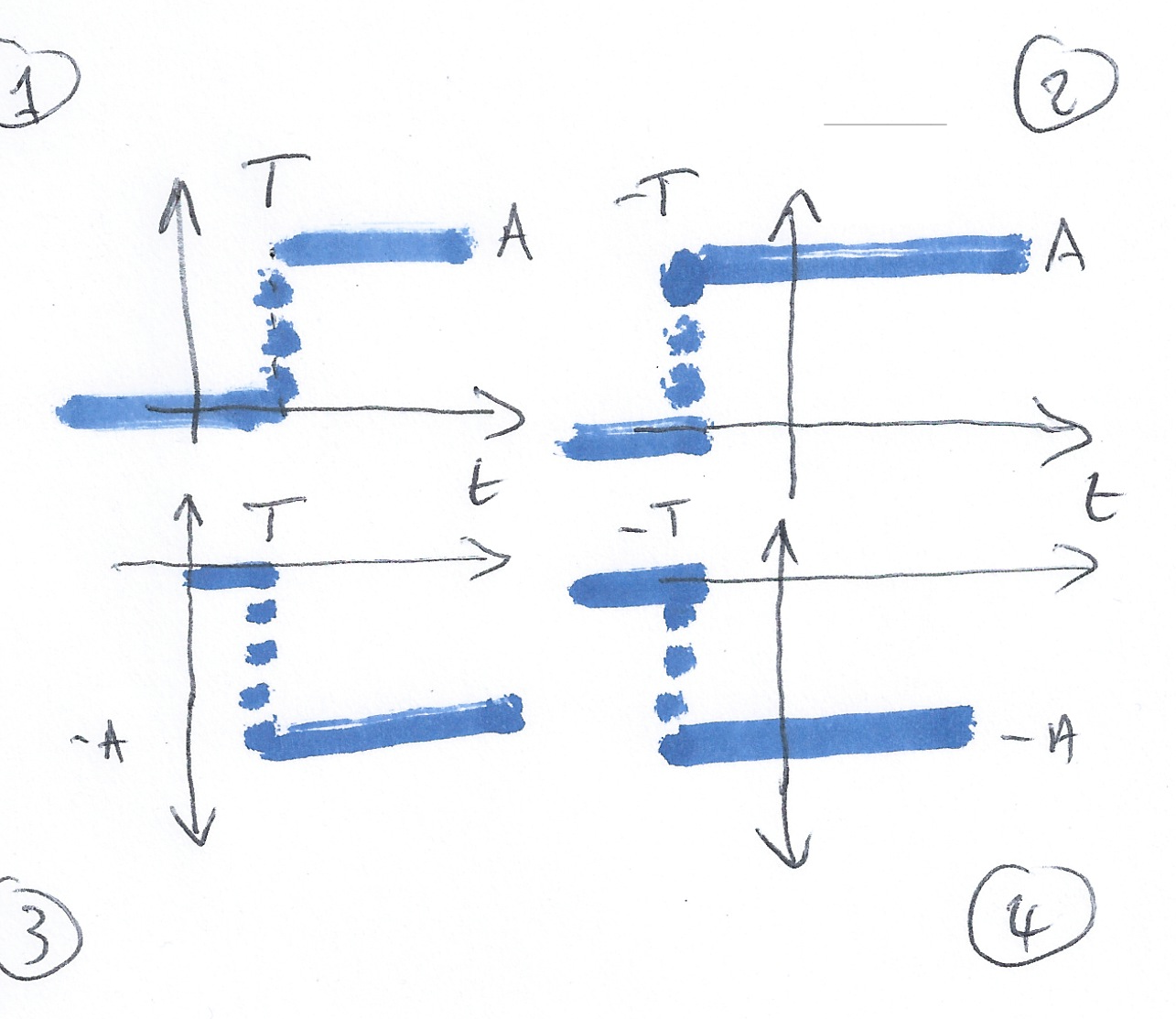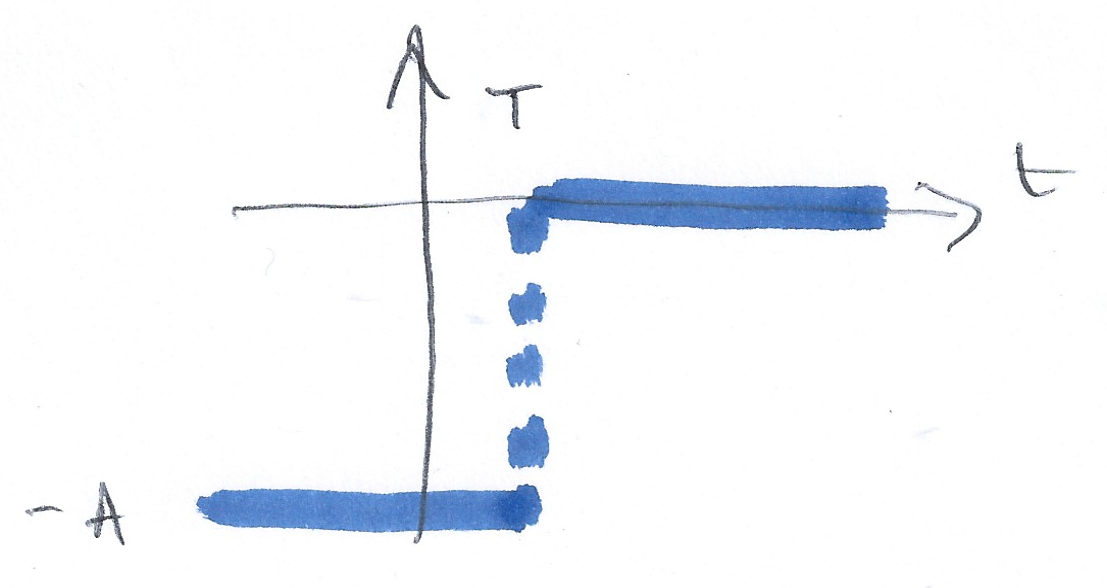Q1: What happens before $t=0$?
- $v_{\mathrm{out}} = \mathrm{undefined}$
- $v_{\mathrm{out}} = 0$
- $v_{\mathrm{out}} = V_s$
- $v_{\mathrm{out}} = 1/2$
- $v_{\mathrm{out}} = \infty$
Q2: What happens after $t=0$?
- $v_{\mathrm{out}} = \mathrm{undefined}$
- $v_{\mathrm{out}} = 0$
- $v_{\mathrm{out}} = V_s$
- $v_{\mathrm{out}} = 1/2$
- $v_{\mathrm{out}} = \infty$
Q3: What happens at $t=0$?
- $v_{\mathrm{out}} = \mathrm{undefined}$
- $v_{\mathrm{out}} = 0$
- $v_{\mathrm{out}} = V_s$
- $v_{\mathrm{out}} = 1/2$
- $v_{\mathrm{out}} = \infty$
Q4: What does the response of $V_{\mathrm{out}}$ look like? Circle the picture you think is correct on your handout.
1: 
2: 
3: 
4: 
The Unit Step Function¶
$${u_0}(t) = \left\{ {\begin{array}{*{20}{c}} {0\quad t < 0}\\ {1\quad t > 0} \end{array}} \right.$$
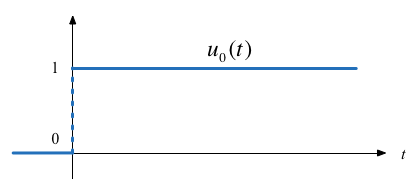
In Matlab¶
In Matlab, we use the heaviside function (Named after Oliver Heaviside).
syms t
ezplot(heaviside(t),[-1,1])
heaviside(0)
ans =
0.5000
Circuit Revisited¶
Consider the network shown below, where the switch is closed at time $t=T$.
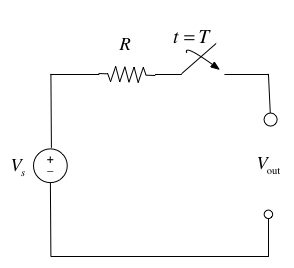
Express the output voltage $v_{\mathrm{out}}$ as a function of the unit step function, and sketch the appropriate waveform.
Simple Signal Operations¶
Amplitude Scaling¶
Sketch $Au_0(t)$ and $-Au_0(t)$
Time Reversal¶
Sketch $u_0(-t)$
Time Delay and Advance¶
Sketch $u_0(t-T)$ and $u_0(t+T)$
Examples¶
-> Open Poll¶
-> Open Poll¶
Synthesis of Signals from Unit Step¶
Unit step functions can be used to represent other time-varying functions such as rectangular pulses, square waves and triangular pulses.
Synthesize Rectangular Pulse¶

Synthesize Square Wave¶
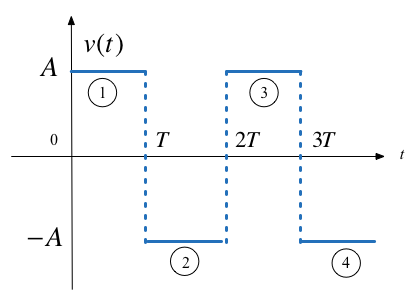
Synthesize Symmetric Rectangular Pulse¶
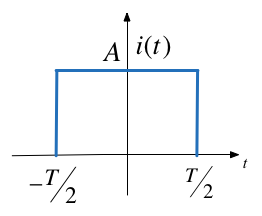
Synthesize Symmetric Triangular Pulse¶
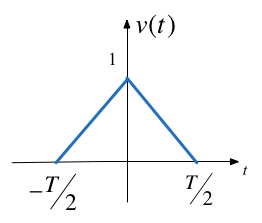
The Ramp Function¶

In the circuit shown above $i_s$ is a constant current source and the switch is closed at time $t=0$.
Show that the voltage across the capacitor can be represented as
$$v_C(t)=\frac{i_s}{C}t u_0(t)$$
and sketch the wave form.
The unit ramp function is defined as
$$u_1(t) = \int_{-\infty}^{t}u_0(\tau)d\tau$$
so
$${u_1}(t) = \left\{ {\begin{array}{*{20}{c}} {0\quad t < 0}\\ {t\quad t \ge 0} \end{array}} \right.$$
and
$$u_0(t) = \frac{d }{dt}u_1(t)$$
The Dirac Delta Function¶

In the circuit shown above, the switch is closed at time $t=0$ and $i_L(t)=0$ for $t<0$. Express the inductor current $i_L(t)$ in terms of the unit step function and hence derive an expression for $v_L(t)$.
The delta function¶
The unit impulse or the delta function, denoted as $\delta(t)$, is the derivative of the unit step.
This function is tricky because $u_0(t)$ is discontinuous at $t=0$ but it must have the properties
$$\int_{-\infty}^{t}\delta(\tau)d\tau = u_0(t)$$
and
$\delta(t) = 0$ for all $t\ne 0$.
Sketch of the delta function¶

Important properties of the delta function¶
Sampling Property¶
The sampling property of the delta function states that
$$f(t)\delta(t-a) = f(a)\delta(t-a)$$
or, when $a = 0$,
$$f(t)\delta(t) = f(0)\delta(t)$$
Sifting Property¶
The sifting property of the delta function states that
$$\int_{-\infty}^{\infty}f(t)\delta(t-\alpha)dt=f(\alpha)$$
Higher Order Delta Fuctions¶
the nth-order delta function is defined as the nth derivative of $u_0(t)$, that is
$$\delta^n(t)=\frac{d^n}{dt^n}[u_0(t)]$$
The function $\delta'(t)$ is called the doublet, $\delta''(t)$ is called the triplet and so on.
By a procedure similar to the derivation of the sampling property we can show that
$$f(t)\delta'(t-a)=f(a)\delta'(t-a)-f'(t)\delta(t-a)$$
Also, derivation of the sifting property can be extended to show that
$$\int_{-\infty}^{\infty}f(t)\delta^n(t-\alpha)dt = {\left. {{{( - 1)}^n}\frac{{{d^n}}}{{d{t^n}}}[f(t)]} \right|_{t = \alpha }}$$
Examples¶
Example 3¶
Evaluate the following expressions
$$3t^4\delta(t-1) $$
$$\int_{-\infty}^{\infty}t\delta(t-2)dt$$
$$t^2\delta'(t-3)$$
Example 4¶

(1) Express the voltage waveform $v(t)$ shown above as a sum of unit step functions for the time interval $-1 < t < 7$ s
Using the result of part (1), compute the derivative of $v(t)$ and sketch its waveform.
Lab Work¶
In the second lab, a week on Monday, we will solve Example 2 using Matlab/Simulink following the procedure given between pages 1-17 and 1-22 of the textbook. We will also explore the heaviside and dirac functions.
